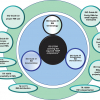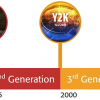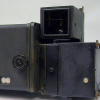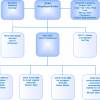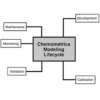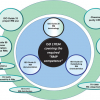Peter Jenks
the Jenks Partnership, Newhaven House, Junction Road, Alderbury, Salisbury, Wiltshire SP5 3AZ, UK
The 12th Biological and Environmental Reference Material symposium (BERM 12) is now over: held at Keble College, Oxford, UK, from 7 to 10 July 2009 it was, based on the feedback received, a resounding success, both scientifically and socially. The weather was perfect and the setting magnificent.
Before looking at the UK Meeting highlights it is important to put BERM into context: it is the original Symposium looking at Biological and Environmental Reference Materials. The first meeting, then known as “BRM” was organised by Dr Wayne Wolf and held in Philadelphia, USA, in September 1983: 26 years ago! Then 25 people shared 16 presentations. Indeed, back then the idea of the application of sound chemical metrology principles to biological matrices was somewhat novel.
BRM 2 was organised by Dr Stöppler near Munich and took place in 1986—this time with over 100 delegates from 29 countries. Two years later he organised BRM 3 which took place in Bayreuth. By 1990 the meeting had become BERM, Biological and Environmental Reference Materials and BERM 4, covering this expanded environmental scope, took place in Orlando, Florida, USA.
Looking back at those early meetings, food and nutrition were the main focus, and at BRM 2 there was much discussion about primary and secondary reference materials and their differing roles. It would be nice to think that after 23 years this debate had been concluded, but it seems to run on, and on, and on.......
BERM 5 took place in Aachen in May 1992 where I was one of 141 registered delegates who spent four and a half days captivated by more than 130 oral and poster presentations. Some of the contacts I made there and people I met I’ve had the privilege of working with over the last 17 years. The Conference Dinner was in the “Rathaus”, or town hall. It was very good... I think.
In 1994, BERM 6 was held in the United States of America... sort of. Stan Rasberry, at the time Chief of the SRM Program at NIST, arranged the meeting on the big Island of Hawaii between 17 and 21 April where, despite the distance and the, shall we say, holiday atmosphere, 105 registered delegates managed to convince their organisations and employers that it was serious science and so took part.
The conference dinner was held on the beach... and was based around a Polynesian style pig roast. This is different: a hole is dug, a bit like a grave, and at the bottom large stones are laid. A fire is lit on the stones and when all is very hot the fire is damped down and the pig, wrapped in palm leaves, is buried and left for some hours. The Hawaiian music and dancing that followed was, thankfully, before digital cameras were developed.
Between BERM 6 and BERM 7 we must not forget the first “spin off” meeting, DUERM 1: this took place in New Delhi in February 1996 and looked at the developing needs for environmental reference materials in the sub-continent: very special!
The success of BERM 6 meant that BERM 7, organised in Antwerp in 1977 had to scale new heights. The organisation was carried out by Markus Stoeppler and Jean Pauwels from IRMM, and for some reason I was co-opted onto the organisation committee. Between 17 and 21 April more than 200 delegates enjoyed the best of Belgian hospitality.
We move forward three years to BERM 8, held in Bethesda during September 2000 and organised by NIST. Another excellent meeting, with a very American flavour: I don’t think that BERM has included a conference “Dinner-Dance” since...
For 2003 it was the turn of Berlin: BERM 9 took place in June 2003 and once again I was involved with the organisation: a very successful meeting took place, organised mainly by Harry Klich. But the meeting was Harry’s epitaph: tragically he did not see the meeting for he was taken ill and died in September 2002, only 52 years old.
BERM 10 took place in the USA: held between 30 April and 4 May 2006 in Charleston, South Carolina, the reports that came back were of a very successful meeting and an excellent social programme.
In many ways BERM 11 broke the mould: up to BERM 10 the symposium had alternated between continental Europe and the USA, but BERM 11 was held at the Tsukuba International Congress Centre in Japan between 29 October and 2 November 2007.
Having broken the mould it seemed easy to agree that BERM 12 should be somewhere new: for the first time the meeting came to the UK. More than 150 delegates from 26 countries attended the symposium, which was opened by the UK Science Minister, Lord Drayson.
Over the three days the programme was made up of 14 sessions.
With 69 oral presentations there was plenty to think about: the use of parallel sessions meant that careful selection was needed. Compared with the last BERM meeting I attended in Berlin, there was a very noticeable increase in both “bio” and “nano” metrology. This is my list of papers that caught my eye or impressed me.
QA/QC, proficiency testing and use of reference materials
- New spectroscopic reference materials for QA & QC control—John Hammond (Starna Scientific, UK)
- European wide external quality assurance exercises for detection of high threat bacteria—Roland Grunow (Robert Koch Institute, Germany)
Environment and energy
- Quality assurance for the Water Framework Directive—Andrea Held (IRMM, Belgium)
- NIST standard reference materials in support of environmental monitoring and remediation—Elizabeth A. Mackey (NIST, USA)
- Development of indoor air pollution reference materials—Gwi Suk Heo (KRISS, S Korea)
- The IAEA experience (2006–2009) with organisation of world wide proficiency tests—Ales Fagjelj (IAEA, Austria)
Health, medicine and forensics
- Standard reference materials for monitoring human exposure to organic contaminants—Michele M. Schantz (NIST, USA)
- Investigating proteomic methods—Gavin O’Connor (LGC, UK)
- Isotope dilution mass spectrometry (IDMS) in protein quantification—Christian Arsene (PTB, Germany)
- Analysis and fate of pharmaceuticals and their degradation products—Damia Barcelo (IDAEA-CSIC, Spain)
Food and reference material production
- The role of reference materials in food regulations and safety—Roger Wood (Food Standards Agency, UK)
- Development of reference materials and methods for selenium and selenium species—Heidi Goenaga-Infante (LGC, UK)
- Highlights of the evolution of reference materials for food and nutrition metrology—Wayne R. Wolf (US Dept of Agriculture)
Reference materials: challenges and trends
- Small size that matter—Franziska Emmerling (BAM, Germany)
- Chemical characterisation of nanomaterials—Gregory Turk (NIST, USA)
- As certification burdens increase work smarter, not (much) harder—David Duewer (NIST, USA)
More professionally selected and peer reviewed oral and poster contributions will appear in special issues of Analytical and Bioanalytical Chemistry (ABC) and Accreditation and Quality Assurance (ACQUAL), which will focus on the new trends and developments in biological and environmental reference materials presented at the conference.
BERM 13 is due to take place during June in 2012 and will be in Vienna, hosted by the International Atomic Energy Authority, another first. Dr Ales Fajgelj, a long time supporter of BERM will be the main organiser. With the resources of the IAEA, an organisation backed by the UN, it should be a meeting to look forward to!


